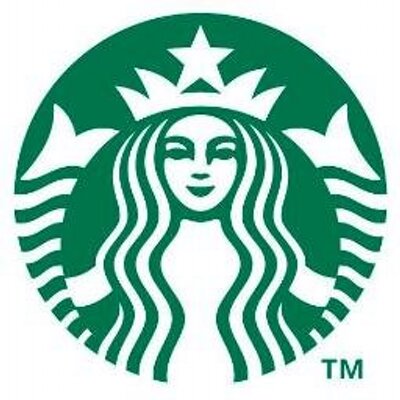
Source: Starbucks
Starbucks (SBUX -1.02%) has been one of the most exciting growth stories and one of the best-performing stocks in recent years. It has delivered four consecutive years of earnings per share, or EPS, growth which exceeded 15% and 15 straight quarters of comparable-store sales growth of more than 6%. In terms of shareholder returns, Starbucks has been equally impressive. Anyone who invested in Starbucks at the end of 2008 at around $7 per share has seen a 10-fold gain over the past five years.
Does Starbucks' future look equally bright? How does it compare with other specialty coffee-chain operators such as Tim Hortons (THI.DL) and Dunkin' Brands (DNKN)?
Multi-channel strategy
Starbuck's multi-channel strategy has been one of the key factors for its success. In addition to traditional grocery sales and mass-channel distribution, Starbucks has developed various new channels in recent years that include Starbucks VIA, Verismo, and Seattle's Best Coffee.
The company targets Starbucks VIA, its brand of instant coffee, at busy consumers who want to have cups of freshly brewed Starbucks coffee on-the-go with minimal hassle. Verismo is Starbucks' line of single-serve coffee makers for its fans who want Starbucks-quality lattes and espressos at home. Starbucks has about 13% share of the U.S. at-home coffee market, which implies further room for growth. In addition, Starbucks also has Seattle's Best Coffee, which is more of a 'mass-market version of Starbucks' that offers lower-priced coffee for more budget-conscious consumers.
Although the demand for coffee is undoubtedly huge, coffee drinkers come in different shapes and sizes with varying needs and expectations. Starbucks' pursuit of a multi-channel strategy has enabled it to use its flagship coffee chains as a base for building a few new high-margin (Verismo) and high-volume (VIA) businesses. More importantly, Starbucks has gained a greater share of the total coffee-drinking population by offering different products and channels that cater to varying price sensitivities and consumption preferences (at-home versus on-the-go).
Similarly, Tim Hortons -- Canada's market leader in caffeinated beverages with 74.5% quick-serve restaurant, or QSR, market share -- has leveraged on channel extensions to expand its footprint and drive brand awareness. It introduced its coffee products (premium blend, decaffeinated version and latte) in single-serve formats using the Kraft Tassimo T-Disc on-demand beverage platform, and they were distributed via its restaurants and other retail channels in the U.S. in 2012. In 2013, it further expanded its single-serve product portfolio with the Tim Hortons RealCup, which is compatible with K-Cup brewers.
The multi-channel strategies of Starbucks and Tim Hortons mirror those of soft drink companies, which have distributed their products through the grocery, fountain, and vending platforms. The soft drink companies maintain their visibility by retaining their market shares in the lower-margin grocery channel while expanding aggressively in the higher-margin vending machine market to expand their profitability.
Among the various specialty coffee chain operators, Starbucks has stood out for its omnipresent brand availability (at airports, airlines, hotels, other restaurant chains, etc), while it has maintained its market leadership in the profitable cafe channel.
Source: Starbucks
International expansion strategy
The world is flat and no American company can afford to ignore international opportunities if it has aspirations to grow. Starbucks' domestic operations generate three-quarters of the company's revenues, which suggests ample opportunities for international growth. In particular, Starbucks' China and the Asia-Pacific segment has been its fastest-growing business over the past three years as it has boasted a minimum of 27% revenue growth in 2011, 2012, and 2013.
In contrast, its American business has achieved more modest growth as it increased its 2011, 2012, and 2013 sales by 7%, 10%, and 11%, respectively. Moreover, Starbucks' China and the Asia-Pacific segment is also more profitable than its other businesses as it had a Return on Investment, or ROI, of 63%, versus a 40% ROI for its American operations.
Starbucks is also at various stages of growth in the different Asian countries. For example, Starbucks is now in its 15th year in China with more than 1,000 stores in 68 cities. Starbucks considers India to be a new market and there it has a small footprint of about 40 stores in four cities. Starbucks plans to open approximately 750 stores in the Asia Pacific region in 2014. This target is very achievable, considering that Starbucks is one of the top consumer brands for global recognition and appeal. In 2013, Starbucks ranked 76th and 91st on Forbes' World's Most Valuable Brands and Interbrand's Best Global Brands lists, respectively.
Starbucks' competitor, Dunkin' Brands' coffee chain brand Dunkin' Donuts, already has a strong presence abroad but it still has growth opportunities. Dunkin' Donuts has stores in more than 30 countries outside the U.S. and it is strong in Asia with more than 2,000 units. Dunkin' Donuts has a strong base in Korea and it has set its eyes on new high-potential markets such as India, where it opened its first store in 2013.
It has also stepped up its efforts in Europe, where it only has a relatively small footprint of slightly more than 100 stores. In December 2013, Dunkin' Donuts opened its first U.K. store. The company has plans under way to expand Dunkin Donuts' presence in Turkey and Scandinavia as well. Since donuts aren't necessarily popular in all parts of the world, Dunkin's Donuts has wisely shifted to a beverage-focused menu strategy for its international markets.
While Starbucks maintains a mix of both company-operated and franchised stores, Dunkin' Brands is almost 100% franchised. This suggests that Dunkin' Brands has selected a more challenging international growth strategy because of the difficulty of finding suitable partners and the bankruptcy risk associated with franchisees that are financially weaker.
Foolish final thoughts
Notwithstanding its excellent financial track record in recent years, Starbucks still has a long runway for growth thanks to its multi-channel and international expansion strategies. This makes it my top pick among specialty coffee-chain stocks.



